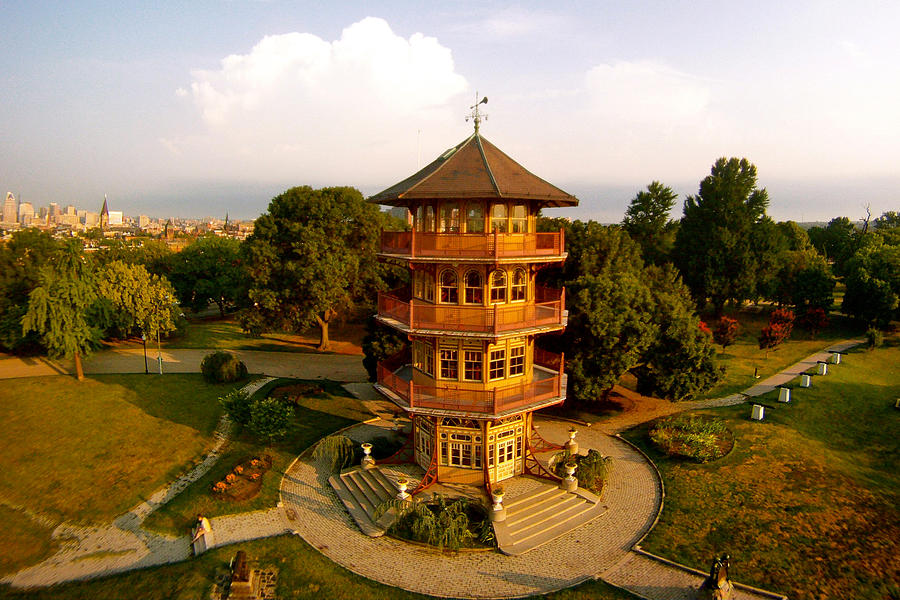The City of Baltimore is often synonymous with urban decay. Therefore, outsiders who have no other knowledge of the city often have extremely negative preconceived notions of it. It is a reality that the city is marked by high rates of crime and poverty and has experienced a sharp decline in population since the mid-twentieth century. Media depictions, such as HBO's epic series "The Wire", have helped fuel the feeling by many that the city is a dangerous area far beyond repair. However, there are some parts of the city headed in a positive direction. These relative success of these areas is almost directly related to the waterfront or public park space within close proximity to the neighborhoods. Baltimore is not a lost cause, partly due to its strategic location within the urban Northeast Corridor, just north of Washington D.C. on I-95 as it heads towards Philadlephia and points north and to the east. The waterfront, along the shore of expansive and famous Chesapeake Bay, is also an enormous advantage for the city.
Public space and parkland play a key role in the health of Baltimore's most vital neighborhoods. Patterson Park is an example of a large urban park that plays a key role within the city. One of the fastest growing areas of the city is the neighborhood right next to the park, not coincidentally also Patterson Park. The positive aspects of living in such close proximity to the a large park is a key selling point in the revitalization of the area. The park itself is situated in the eastern part of the city within close proximity to the waterfront of the Baltimore Harbor. The land lies on a pivotal area in the city's history. As a result, the city has taken a proactive approach in preserving it for the public since the early 1800s. It all began when William Patterson, for whom the park is named, offered the city six acres of his property that overlooked the harbor from a small hill. He was inspired by the public walks he had experienced in Europe and wanted to create something similar in Baltimore. By the 1850s, the city had purchased another 29 acres from the heirs of Patterson and the park was on its way to success. By 1860, the city acquired an additional 30 acres and began to model it after Central Park in New York. However, once the Civil War began, it became a key encampment for troops and a hospital was put on its grounds. Hempstead Hill, the high point of the park, was a strategic outpost and fortification for the troops. Once the war ended, the park was in a state of disrepair.
It was at this time that the park adapted the character for which it is known today. The Victorian landscaping that remains today is a result of this process The famous Pagoda, designed in 1890 by Charles Latrobe and pictured at the top of this entry, is a remnant of this era. The well-known marble fountain,pictured below, also dates to this era and was one of the first restoration efforts after the war. The park was then also designed to be a recreation destination. There are public fields and courts as well as miles of relatively flat and gentle walking and jogging paths. This is a crucial element of the park as the surrounding neighborhoods of Baltimore are extremely dense and offer little in the way of safe and adequate areas for recreation or exercise.
As already mentioned, the neighborhood of Patterson Park has been on an upswing in recent years. As urban living among young people becomes increasingly desirable, neighborhoods such as Patterson Park will experience an increase in vitality. The neighborhood offers urban living, older, affordable homes ripe with character and charm, and access to large tract of classic open space. Many townhouses that were once abandoned have now been restored and thoroughly modernized. Now, the neighborhood is safer than most in the city, has less vacancy, and property values have gone up sharply since the 1980s. The location of the neighborhood, next to a large public park and close to the waterfront, has helped immensely in this reversal of fortune. Location is a key aspect in urban revitalization. It is especially crucial if a large public lands are within close proximity as well as other nearby economic growth, either locally or regionally. Baltimore and Patterson Park have both of these aspects in their pocket. Now hopefully the rest of Baltimore can make some progress as well.



I am originally from Maryland and only recently I have begun looking at areas like this with thoughts of investing into properties around this area. I missed a recent opportunity to grab a townhouse that was up for auction. I think that the nearby water front, the park and nearby reviving areas will make this one better. And that's without an extensive time watching it. I'd like to follow your work. How can I subscribe to your blog/twitter, etc?
ReplyDelete